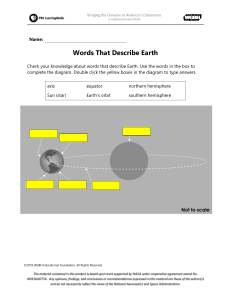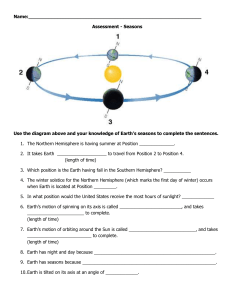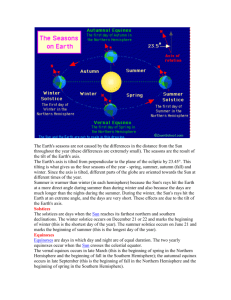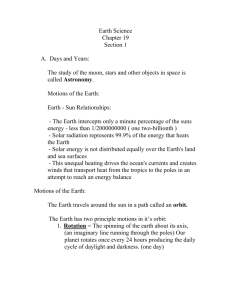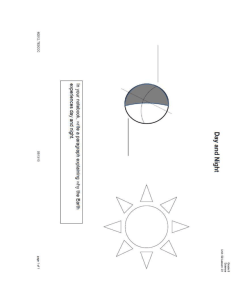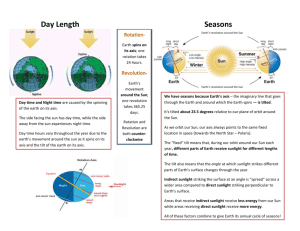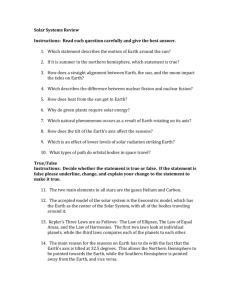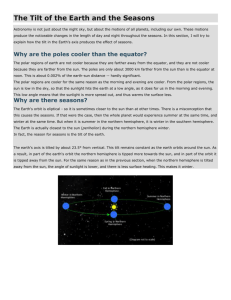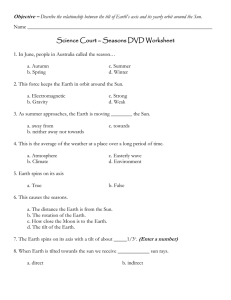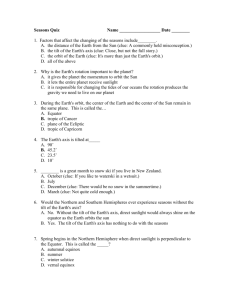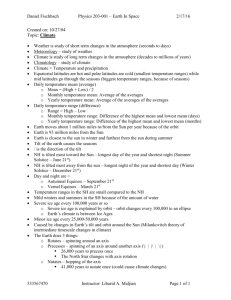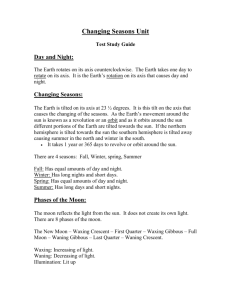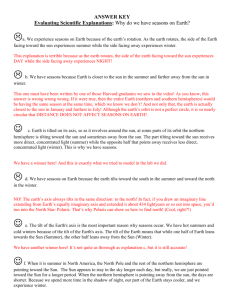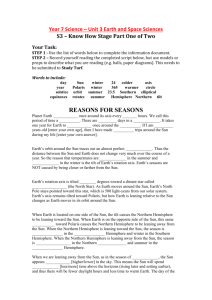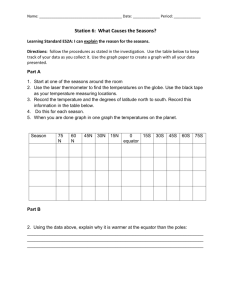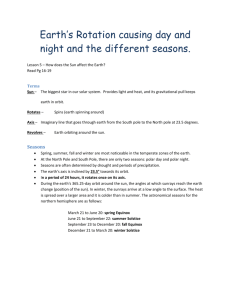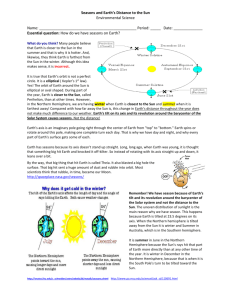Name: The Seasons
advertisement
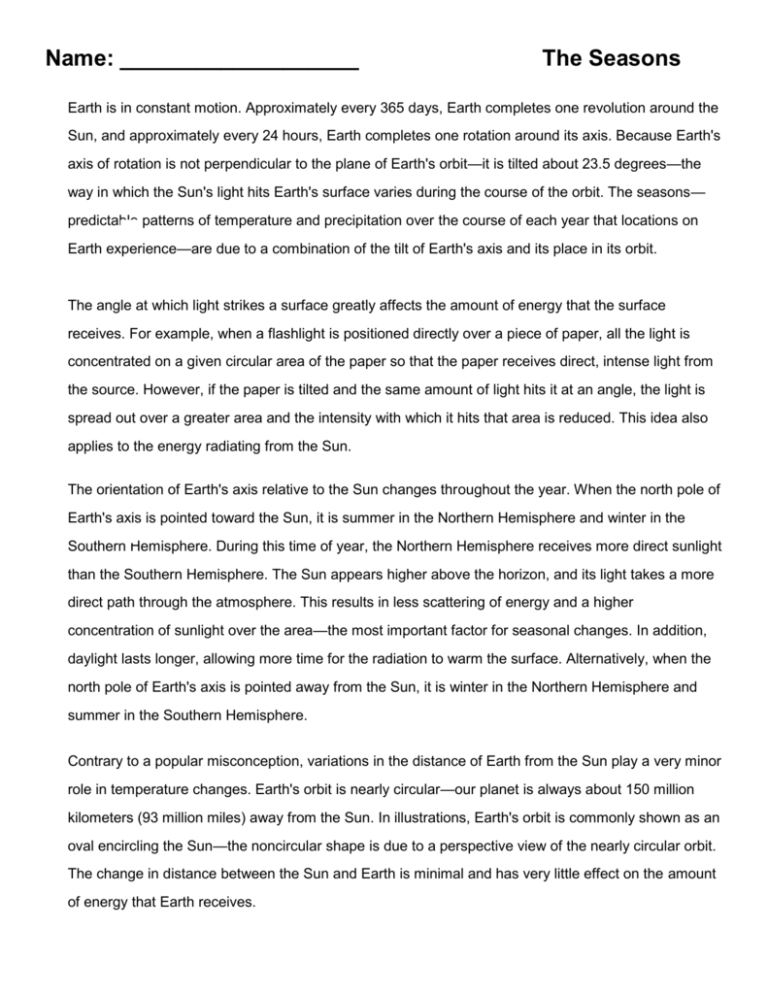
Name: ___________________ The Seasons Earth is in constant motion. Approximately every 365 days, Earth completes one revolution around the Sun, and approximately every 24 hours, Earth completes one rotation around its axis. Because Earth's axis of rotation is not perpendicular to the plane of Earth's orbit—it is tilted about 23.5 degrees—the way in which the Sun's light hits Earth's surface varies during the course of the orbit. The seasons— predictable patterns of temperature and precipitation over the course of each year that locations on Earth experience—are due to a combination of the tilt of Earth's axis and its place in its orbit. The angle at which light strikes a surface greatly affects the amount of energy that the surface receives. For example, when a flashlight is positioned directly over a piece of paper, all the light is concentrated on a given circular area of the paper so that the paper receives direct, intense light from the source. However, if the paper is tilted and the same amount of light hits it at an angle, the light is spread out over a greater area and the intensity with which it hits that area is reduced. This idea also applies to the energy radiating from the Sun. The orientation of Earth's axis relative to the Sun changes throughout the year. When the north pole of Earth's axis is pointed toward the Sun, it is summer in the Northern Hemisphere and winter in the Southern Hemisphere. During this time of year, the Northern Hemisphere receives more direct sunlight than the Southern Hemisphere. The Sun appears higher above the horizon, and its light takes a more direct path through the atmosphere. This results in less scattering of energy and a higher concentration of sunlight over the area—the most important factor for seasonal changes. In addition, daylight lasts longer, allowing more time for the radiation to warm the surface. Alternatively, when the north pole of Earth's axis is pointed away from the Sun, it is winter in the Northern Hemisphere and summer in the Southern Hemisphere. Contrary to a popular misconception, variations in the distance of Earth from the Sun play a very minor role in temperature changes. Earth's orbit is nearly circular—our planet is always about 150 million kilometers (93 million miles) away from the Sun. In illustrations, Earth's orbit is commonly shown as an oval encircling the Sun—the noncircular shape is due to a perspective view of the nearly circular orbit. The change in distance between the Sun and Earth is minimal and has very little effect on the amount of energy that Earth receives. Answer the questions based on the reading. 1. What two variables interact to cause the seasons? 2. How is the tilt of the earth during summer and winter different? 3. Explain the most important factor in the cause of seasonal changes. 4. Your friend insists that the distance of earth from the sun causes the changes in seasons. How would you respond? 5. Write a better title for this article. Explain why you think it’s a better title.
